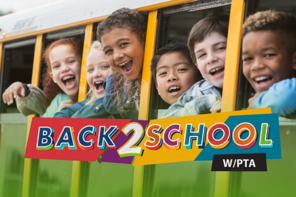When you hear the words “computer science,”do you imagine a college student sitting in front of a computer alone, typing code all day and night? Think again!
Kaila Piscitelli was a student at Conrad High School in Connecticut when she created an app that recommends clothes that a traveler should pack based on weather forecasts in the place they’re going. Her classmate, Lily Sientab, built an app that teaches younger students the alphabet. Hamed Nassaco— who attended the Academy for Software Engineering in New York— uses computer code to write songs.
AP Computer Science Principles
These students brought their ideas to life in AP Computer Science Principles (AP CSP). This new Advanced Placement course from the College Board invites students— even those with no previous coding or programming experience—to use computing tools and skills to pursue their unique interests, showcase their creativity and address real-world issues in their community.
Like other Advanced Placement courses, AP CSP is a college-level course and exam that students can take while in high school. The curriculum for each Advanced Placement course is created for the College Board by a panel of experts and college-level educators in each specific field of study.
American colleges and universities may grant placement and course credit to students who obtain good scores on the Advanced Placement examinations.
Learning the basics of computer science can lead to hundreds of career choices, from engineering, law and medicine to animation, visual arts and music. The U.S. Bureau of Labor Statistics estimates that more than 9 million STEM jobs will open up over the next decade, and half of those will require a computing background.
Diversity in Computer Science
However, through our own research, the College Board has learned that many students who have the potential to succeed in advanced computer science coursework never seize that opportunity— especially female, African American and Latino students. And we know from the National Science Foundation—a partner in our AP CSP work— that the number of women graduating with computer science degrees has decreased to nearly half of what it was in the early 2000s.
By broadening the invitation and working with endorsed providers at Beauty and Joy of Computing, Code.org, Mobile CSP, Project Lead the Way and Uteach CSP, as well as states and districts across the country, the College Board is working to make computer science education much more widely available to young women, students of color and students in rural communities.
Over 2,500 schools offered the course this fall, and in AP CSP’s first year some 300 colleges and universities are already awarding credit or placement to students who receive a passing score of 3 or higher on the AP CSP Exam.
Computer Science is for Everyone!
All students deserve access to the technology and skills they’ll need to succeed in the future. Studying computer science is about using one elaborate tool to solve real-life problems, creatively and collaboratively.
Lily Sientab, the alphabet-teaching app designer, agrees.
“This class is about taking your own ideas and implementing them to create something new,” said Sientab. Computer science has shown me that I can try, and try again, and actually accomplish what I set my mind to do.”
To learn more about AP Computer Science Principles, or to see if the course is a good fit for your child’s school, visit CollegeBoard.org/CSP.
Crystal Barrick is the assistant director of communications at the College Board, a nonprofit organization that connects students to college success and opportunity.





